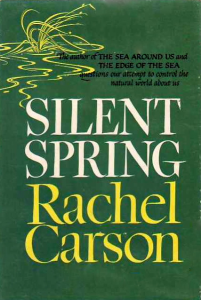
When the PBS American Experience story of Rachel Carson aired this week, some might speculate as to what Loren Eiseley thought of the book when it appeared.
Wikipedia’s page on Rachel Carson’s groundbreaking Silent Spring cites Loren Eiseley as a leading supporter. In his 2012 New Atlantis essay noting the 50th anniversary of the book’s publication, Charles T. Rubin retrieved Eiseley’s assessment. He cited Carson’s
. . . account of those floods of insecticides and well-intentioned protective devices which have indiscriminately slaughtered our wildlife of both forest and stream. Such ill-considered activities break the necessary food chains of nature and destroy the livelihoods of creatures not even directly affected by the pesticides.
Readers with access might also be interested in a comparison of the literary techniques of the two authors, which was undertaken by Michael Bryson in 2002. From his abstract:
Scientist-writers Rachel Carson and Loren Eiseley use a variety of narrative strategies to describe natural phenomena and explain scientific concepts. These techniques also contribute to an incisive yet balanced critique of science, one rooted in an ethical approach to nature, a rejection of anthropocentrism, and a healthy suspicion of the blind faith in scientific and technological progress. This article analyzes their use of metaphor and perspective, construction of narrative personae, emotional appeals, and invocations of the imagination.
Eiseley, Loren. “Using a Plague to Fight a Plague,” Saturday Review 45 (September 29, 1962): 18-19.
M. A. Bryson, “Nature, narrative, and the Scientist-Writer: Rachel Carson’s and Loren Eiseley’s critique of science,” Technical Communication Quarterly, vol. 12, no. 4, pp. 369-387, 2003. [Online]. Available: http://dx.doi.org/10.1207/s15427625tcq1204_2
